Tips from Animal Behaviourist Mark Vette to help your fearful feline feel safe
Is your cat skittish, shy, or easily startled? Do they hide from visitors, panic at loud noises, or seem on edge for no clear reason? You’re not alone. Many cats suffer from anxiety—especially if they didn’t get proper socialisation early in life, have had frightening experiences, or live in a stressful environment.
The good news is, you can help a fearful cat feel safer and more confident. Mark Vette, Animal Behaviourist, shares some tips on how.
1. Understand where the fear comes from
Cats are highly sensitive animals, and anxiety is often a natural response to feeling unsafe or out of control.
Common causes include:
- Limited socialisation or exposure to novel experiences during the kitten’s formative period (3–9 weeks)
- Negative or frightening experiences (rough handling, noise trauma, vet visits)
- Unfamiliar people, pets, or changes in their environment
- Pressure from other cats, especially roaming tomcats or multi-cat stress
In many cases, it’s not about “fixing” your cat—but learning how to help them feel safe and respected within their limits.

Mark Vette is a world-renowned Animal Behaviourist, Zoologist and Trainer. He brings together a unique combination of academic studies with 40 years of applied clinical animal behaviour consulting and treatment. Mark is a member of the International Association of Animal Behaviour Consultants. This article was written by Mark and the views expressed are his own.
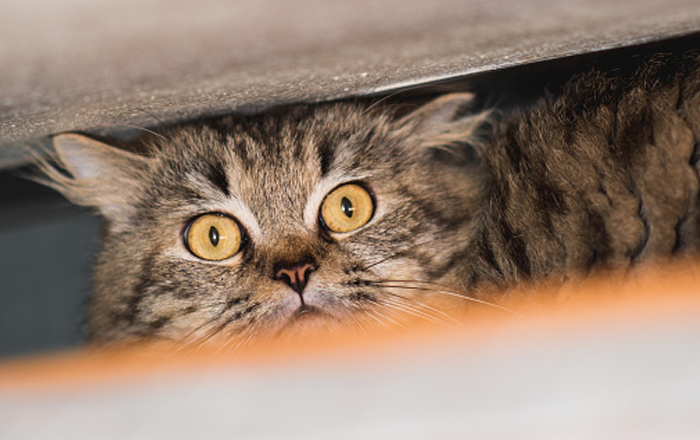
2. Give them control of their environment
A fearful cat needs to know they have a way out. When cats feel cornered or trapped, anxiety escalates quickly.
Support your cat by:
- Providing multiple safe spaces around the home—high, hidden, and quiet (e.g. wardrobes, covered beds, cat trees, laundry shelves)
- Ensuring access to escape routes when introducing new people or pets
- Giving them choice and space during interactions—don’t force closeness
The more control they have, the less threatened they’ll feel.
3. Create quiet safe haven
Set up a low-stress sanctuary your cat can retreat to. This might include:
- A quiet room away from foot traffic
- A cozy hiding space or igloo-style bed
- Access to food, water, litter trays, and scratching posts
- Pheromone diffusers (e.g. Feliway) to help create a calming scent environment
Let this be a no-go zone for guests and young children. It should be your cat’s retreat, not a place where they’re expected to socialise.
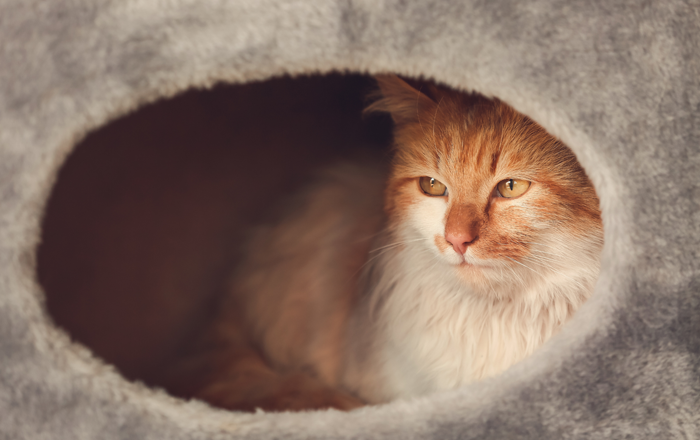
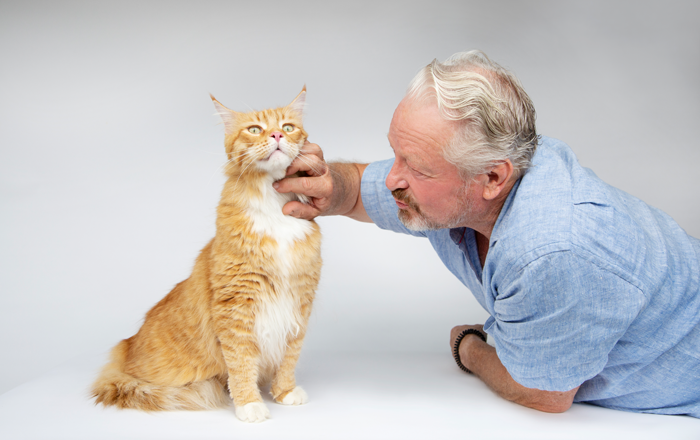
4. Let them set the pace
When helping a scared cat gain confidence, less is more. Don’t try to pick them up, coax them out of hiding, or force introductions.
Instead:
- Sit quietly nearby and let your cat approach you
- Use slow blinks (half-closing your eyes) to signal trust
- Offer tasty treats or wand toys to lure them out without pressure
- Allow interactions to be brief and positive—end on a good note
Your cat will learn, over time, that people and new situations don’t have to be scary.
5. Use the right kind of touch
If your cat allows petting, focus on the areas most cats enjoy:
- Base of the ears
- Under the chin
- Cheeks
Avoid:
- The belly (a vulnerable area)
- The rump (can trigger unwanted arousal or biting)
- Overly long or intense strokes
Pay close attention to body language. Signs your cat has had enough include tail flicking, head turns, nose licking, or sudden stillness. Respect those cues and back off if you see them, to build trust.
6. Consider stress from other cats
One of the biggest causes of feline anxiety is stress from other cats—whether inside the home or outside it.
Signs your cat may be affected include:
- Avoiding certain rooms or windows
- Urine marking or soiling outside the litter tray
- Sudden aggression or hiding
What you can do:
- Install a microchip cat flap to prevent unfamiliar cats entering
- Block outside views where roaming cats pass by
- Add vertical territory indoors so your cat can avoid confrontation
- If you own multiple cats, make sure each has their own resources (e.g. beds, litter trays, etc.) and safe spaces
- Install cat-proof fencing (roller tops) so other cats can’t enter your property
In some cases, you may want to consider a “catio” (enclosed outdoor area) to let your cat enjoy the outdoors without territorial stress.
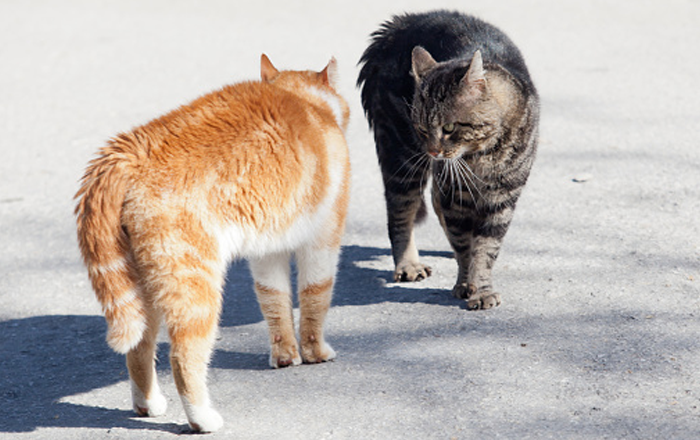
7. Use calming aids
Pheromone products like Feliway can help reduce anxiety by mimicking natural calming facial pheromones.
You can also try:
- Calming collars with herbal or pheromone infusions
- Nutritional supplements formulated to reduce feline stress
- Playing soft, calming music in the background
Speak to your vet about anti-anxiety medication to support your cat during particularly stressful periods or alongside behavioural therapy.
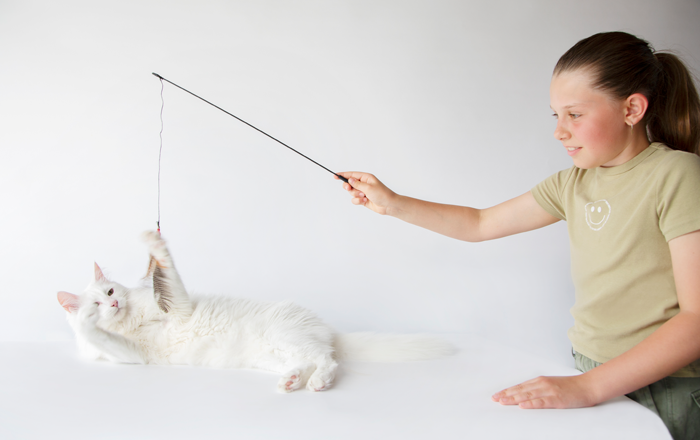
8. Use play to build confidence
Play can be therapeutic for anxious cats. It helps them:
- Express natural hunting instincts
- Focus on something other than their fear
- Develop a more positive association with their environment
Use wand toys, feather teasers, or string-style games to engage your cat from a distance. Let them “win” regularly and always end the session with a small food reward. It’s important to note, never leave wand toys, feather teasers or string unattended with your cat. These toys are designed for supervised play only and if swallowed, can cause life-threatening intestinal blockages that may require emergency surgery.
9. Try clicker training (yes, for cats!)
Clicker training can help fearful cats feel more confident and in control. It works by marking and rewarding calm or curious behaviours.
To start:
- Pair the click sound with a treat repeatedly until your cat understands it means something good is coming
- Click and reward when your cat:
- Comes toward you
- Touches a target (like a spoon or stick)
- Shows curiosity toward a new item or person
Keep sessions very short and always end with success. Over time, this helps build resilience and positive experiences with previously scary situations.
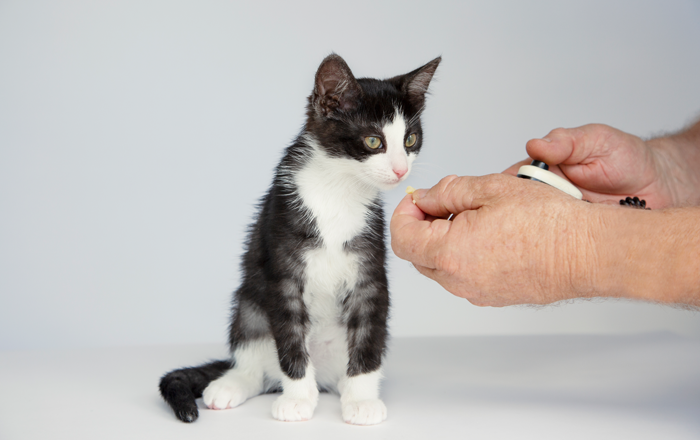
10. Be patient and manage expectations
A fearful cat won’t become a social butterfly overnight—and that’s okay. Some cats will never enjoy being handled by strangers, or sitting on laps. What matters most is that they feel safe, respected, and free from fear in their own home.
Celebrate small progress:
- Spending more time out of hiding
- Showing curiosity instead of fear
- Allowing gentle touch or staying nearby
By creating a predictable, calm environment and letting your cat come to you, you’ll be surprised how much confidence they can gain over time.
Final thoughts
Helping an anxious cat isn’t about forcing change—it’s about creating conditions where they can feel safe enough to grow. When you respect their boundaries, offer gentle encouragement, and give them space and choice, you’ll lay the foundation for a much more relaxed and confident feline companion.
Love, patience, and the right environment can make all the difference.
Always consult your vet on the best way to look after your pet. And to avoid unexpected costs, make sure your pet is insured.
Have a look at our pet insurance plans to choose the right insurance plan for your pet.
